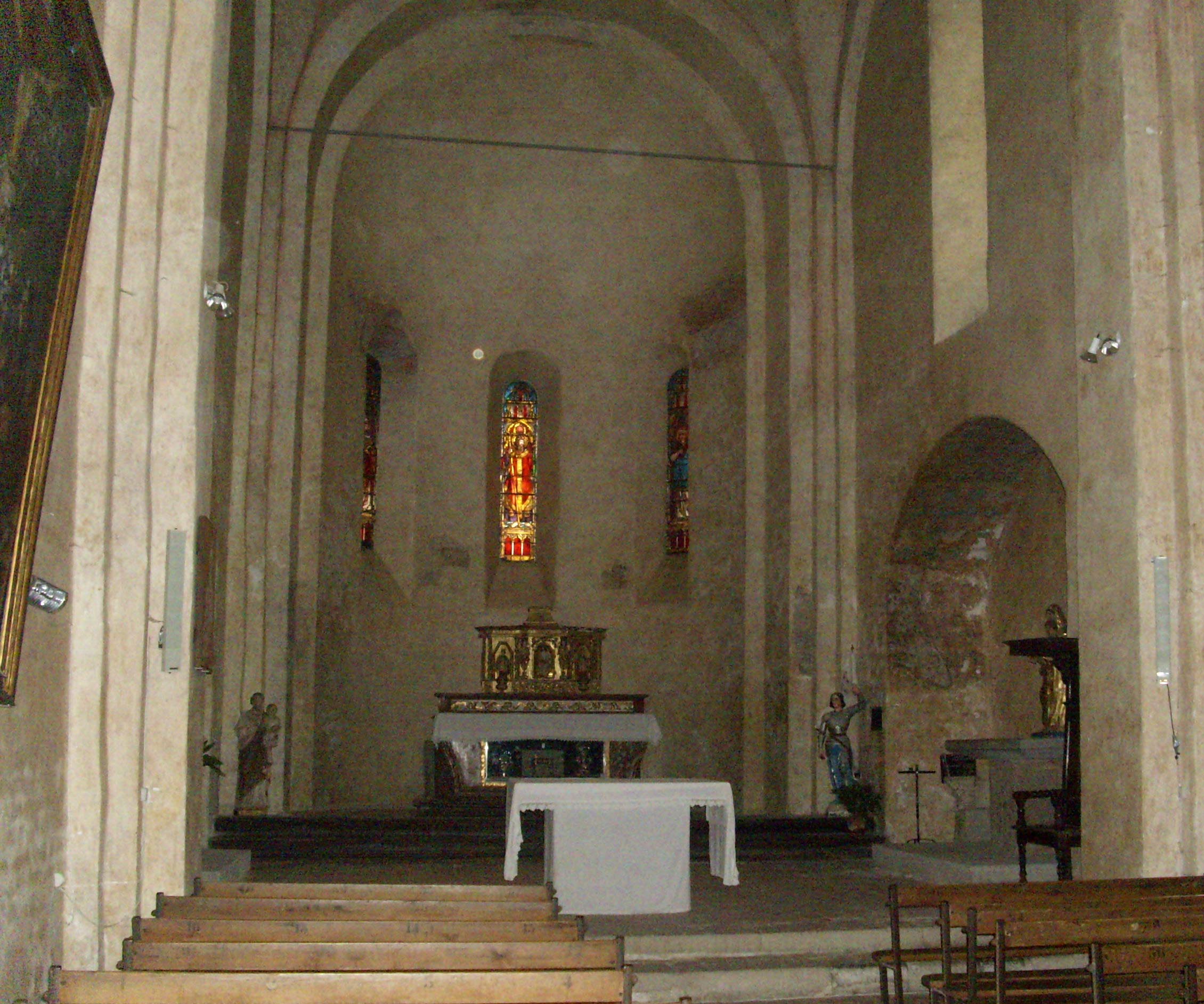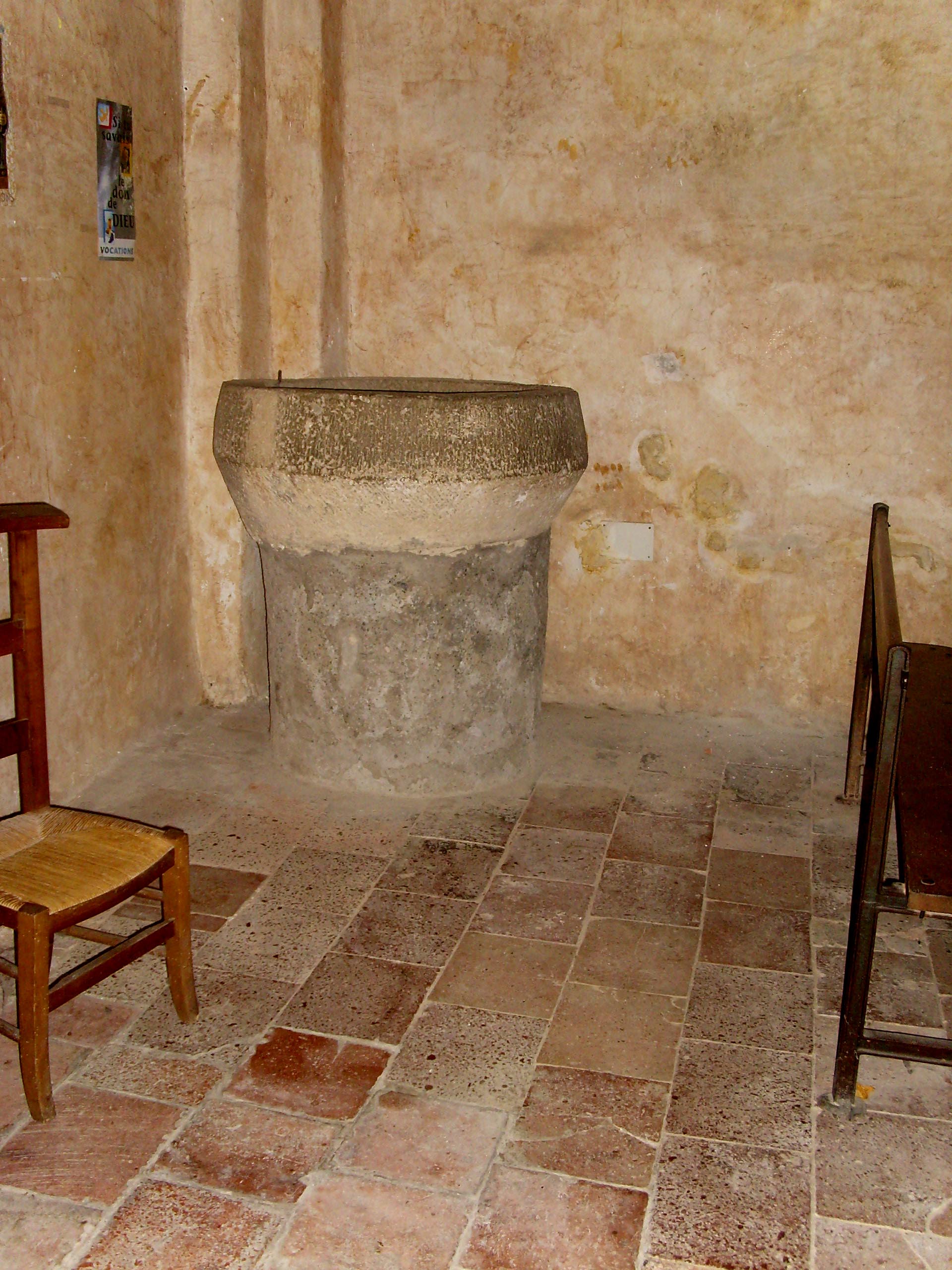Saint Polycarpe near Limoux
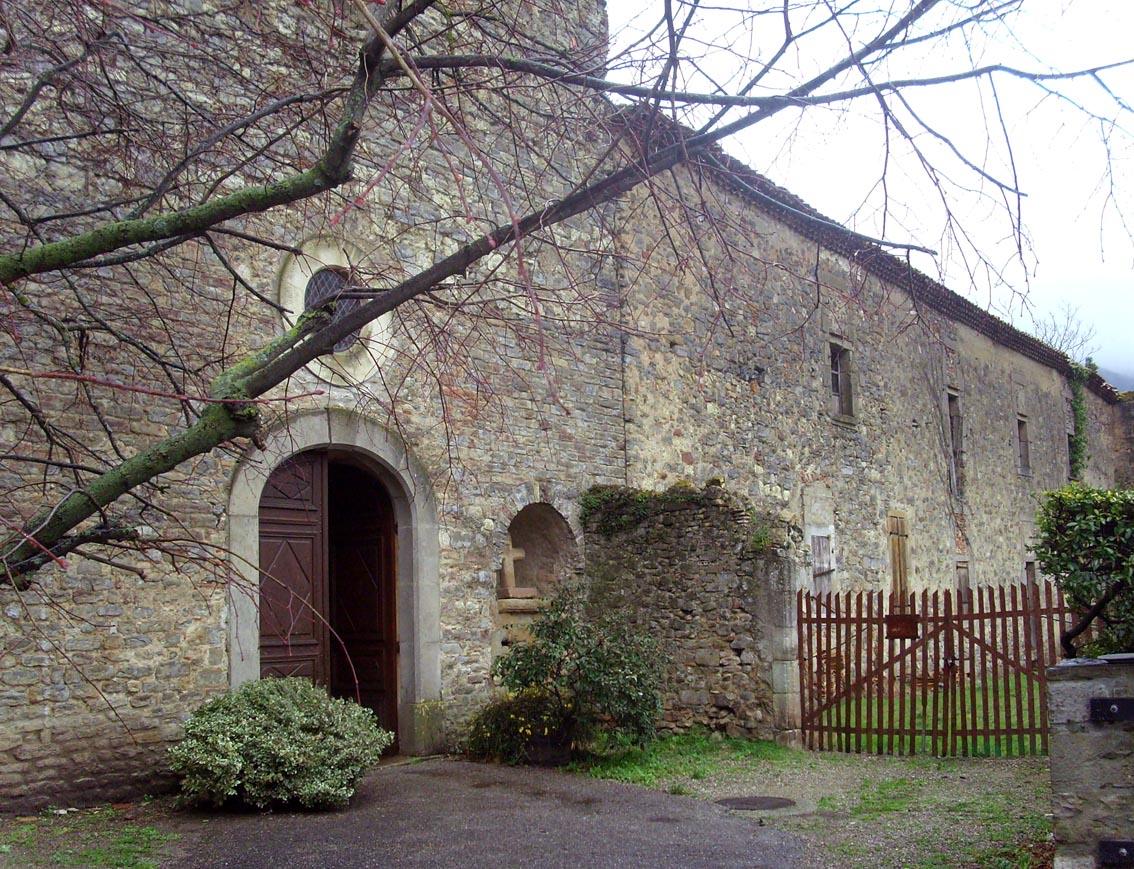
The church is open every day, in the village of the same name, but if you want to see the whole abbey behind it, which I have never yet been able to do, then you need to ask for the key from the Mairie, whose number is 04 68 31 14 31
The village is situated on the D129 to the south of Limoux, pick up the road on the eastern side of the river in Limoux and continue for some eight kilometres. Three kilometres further on is the tiny hamlet of "Benoît." Interesting, because the abbey was founded in 780 by St Benoît, a friend of Guilhem de Gellone. The two were Visigothic, towards the end of the Visigothic period, when the Visigoths had started to intermarry with the Carolingians and were giving themselves French names. And so, of course, French historians call this place "Carolingian."
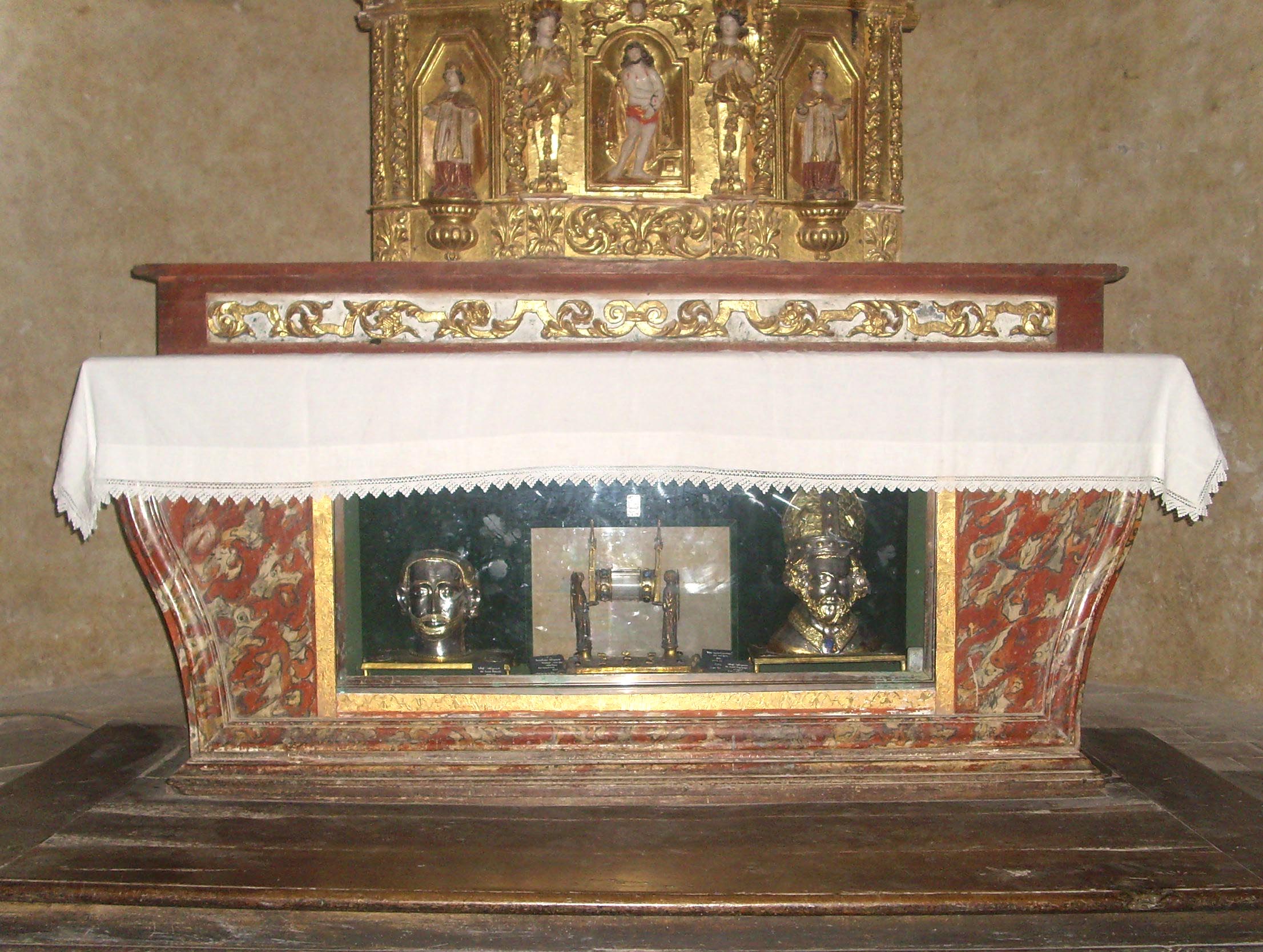
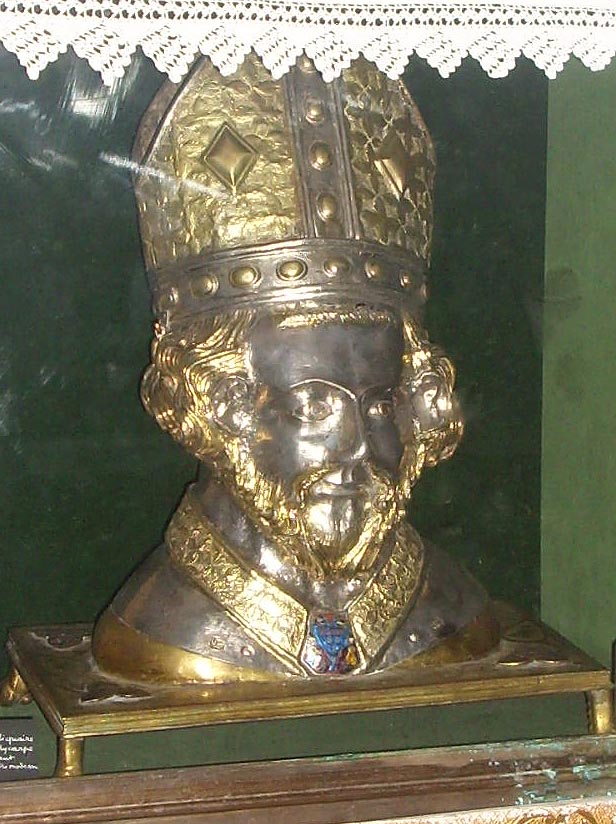
The head of St Benoît (pronounced Ben-wah) is incorporated in the altar; the head on the left is that of St. Polycarpe. They say that Polycarpe was a saint of the ninth century, not the 8th. The founder of this abbey was Benoît, his Visigothic name was Witiza before he changed it to Benoît, because he wanted to revive, in Languedoc. the monastic life of St. Benoît of Nursie. He founded St Polycarpe, that's certain, but we don't know why it was re-named afterwards.
On the left and the right of this main altar, are two Visigothic altars, made from the pink marble of the region, perfectly preserved. This is the first;
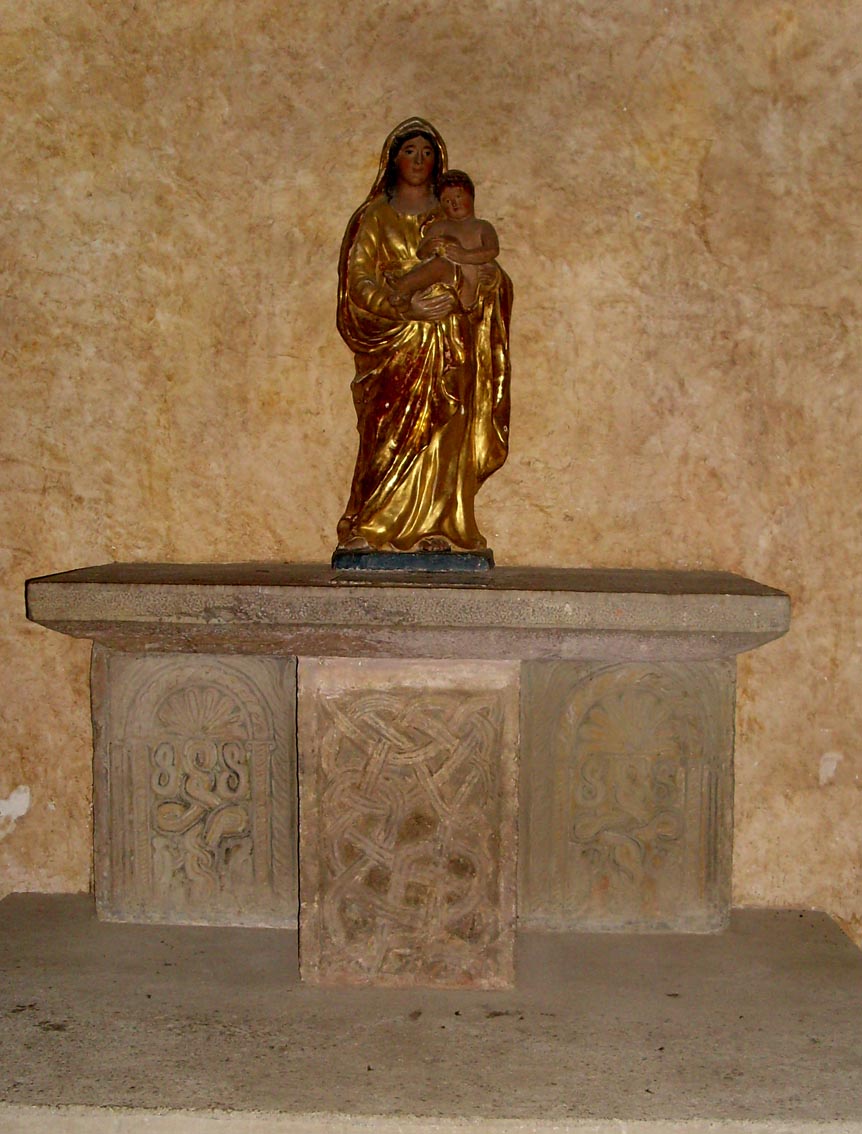
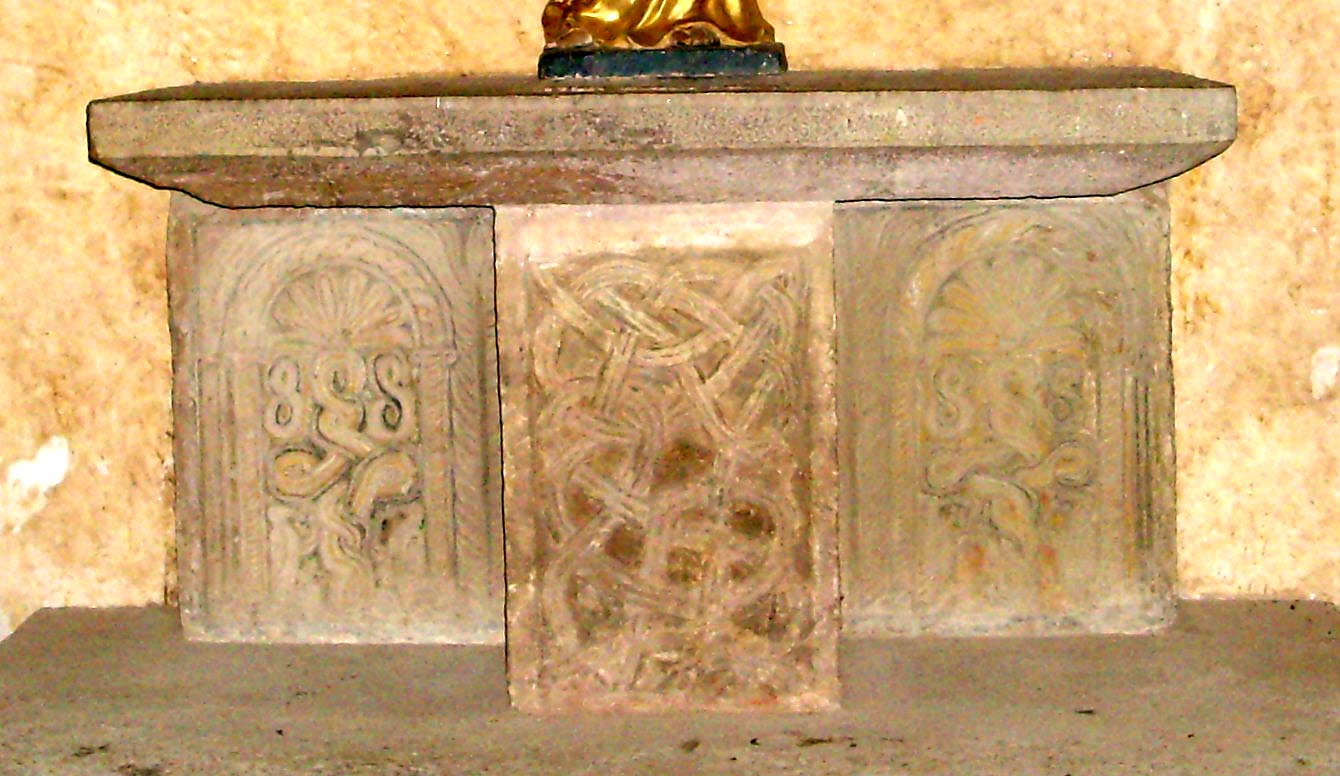
I enlarged the picture and increased the contrast in the second picture to make the decorations, typically Visigothic, more visible. And there is yet another Visigothic altar!
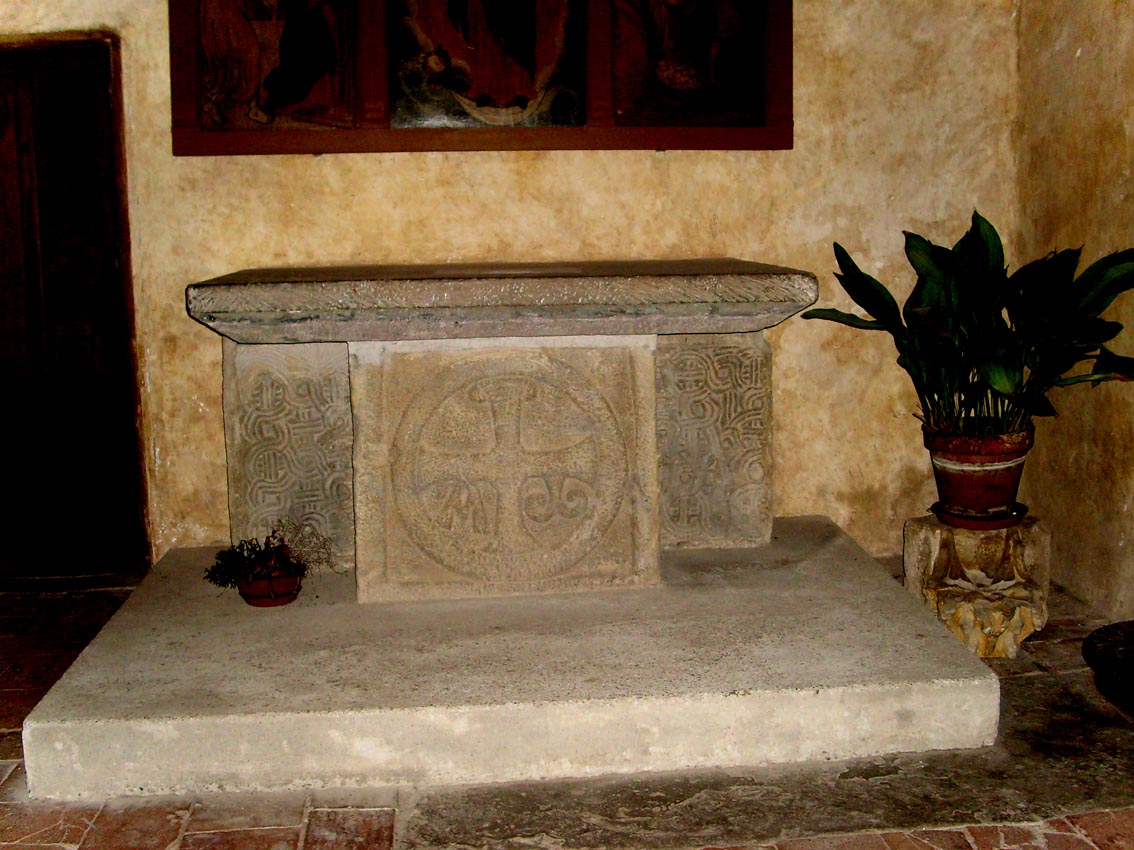
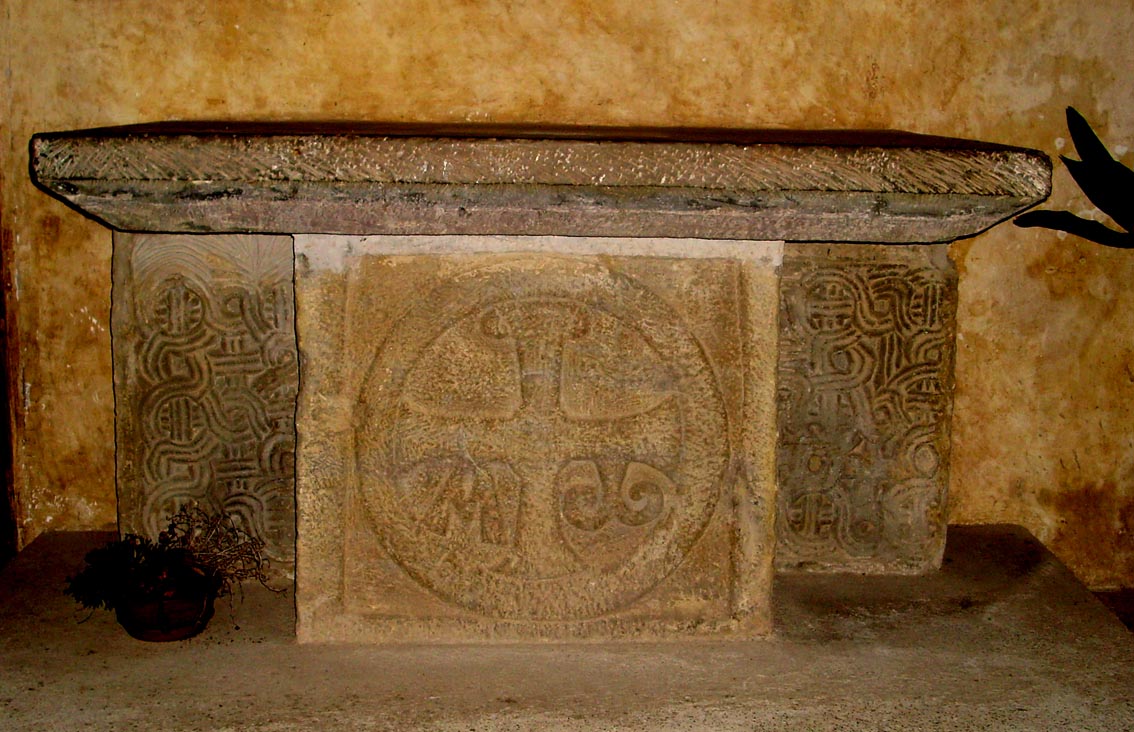
On it you can see "The Cross of Silence" very similar to the one of the much earlier Visigothic plinth at Rennes-le-Château. This design showed the cross with a handle, by which it was grasped and held aloft by the priest leading a procession. I think we can truthfully say that the "Cross of Silence" with its altha and omega, the beginning and the end, was typically Visigothic. this idea came from the Gospel of St. John, which later became the favourite gospel of the Cathars. Coincidence?
It was marvellous to see these things at St.Polycarp, so well preserved, but also I admired the architecture of the building.
The font near the entrance is quite large but we can see that by this time, baptism was no longer the whole body baptism from the time of Jesus and John the Baptist.
And here's two items from the church that are not Visigothic, but beautifully done, just the same.
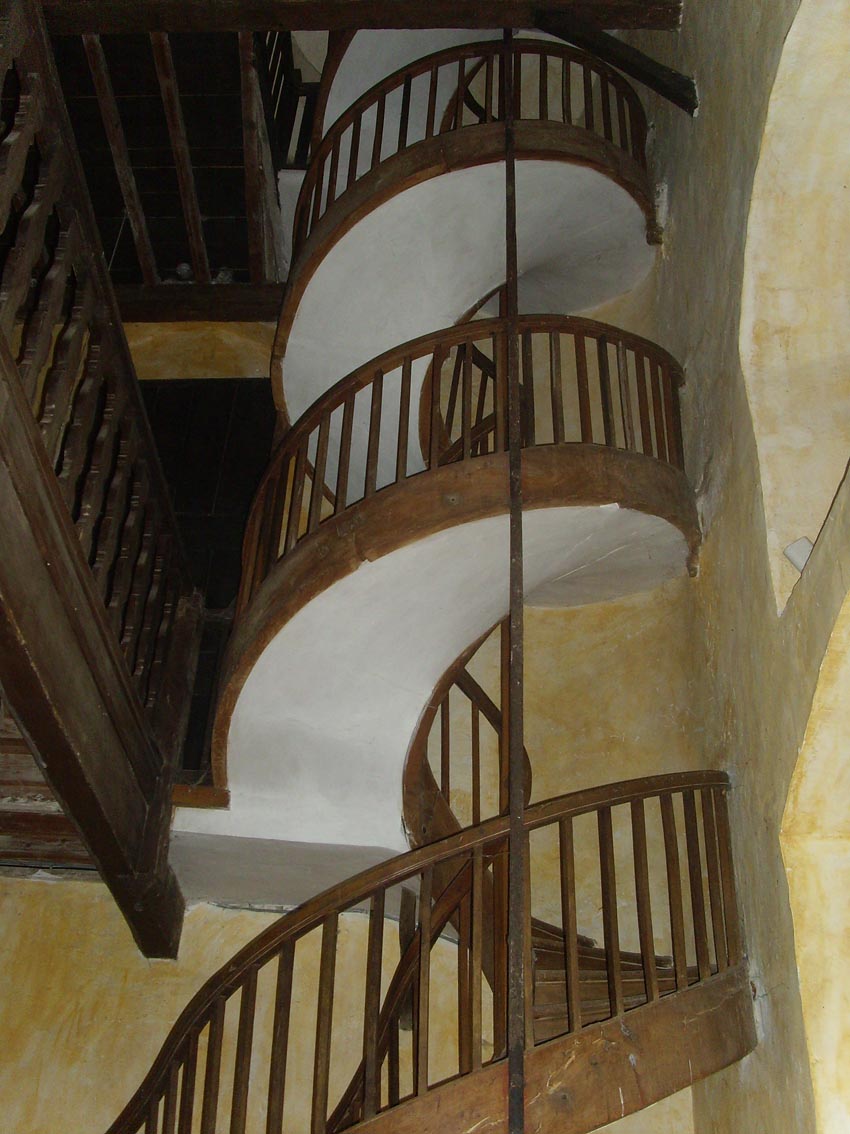
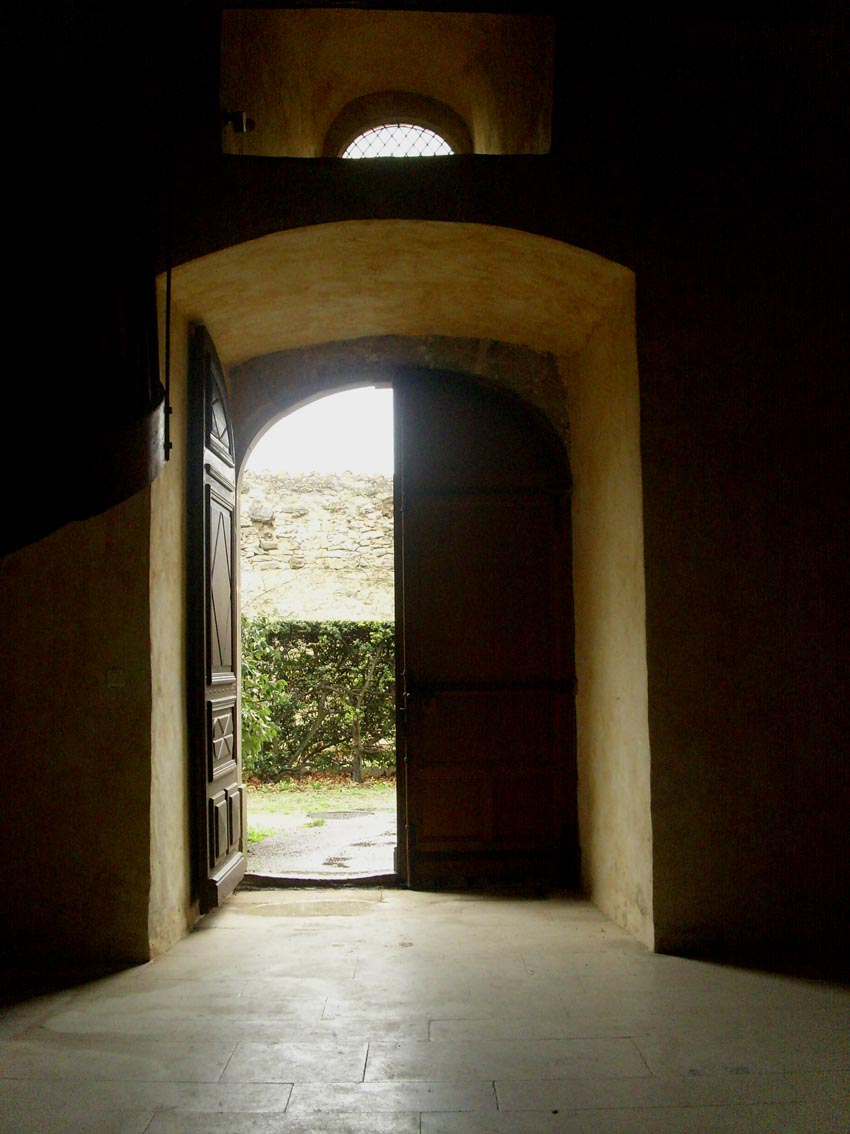
So next time you go to Limoux - do a detour to St. Polycarp.
Inscrivez-vous au site
Soyez prévenu par email des prochaines mises à jour
Rejoignez les 21 autres membres

